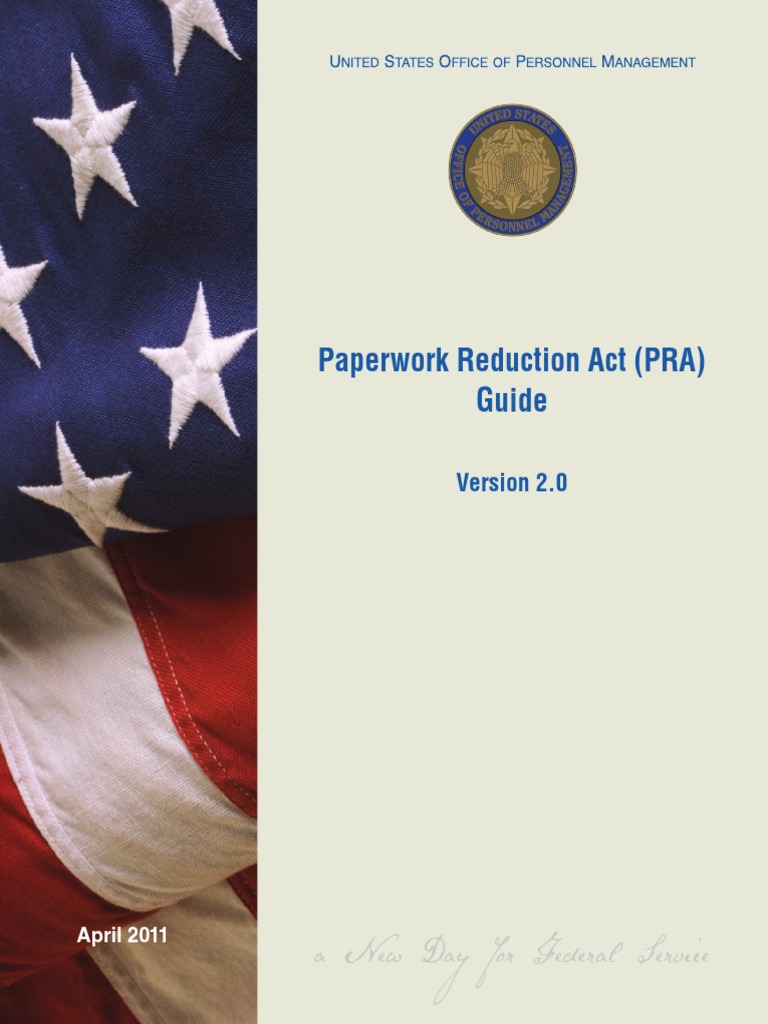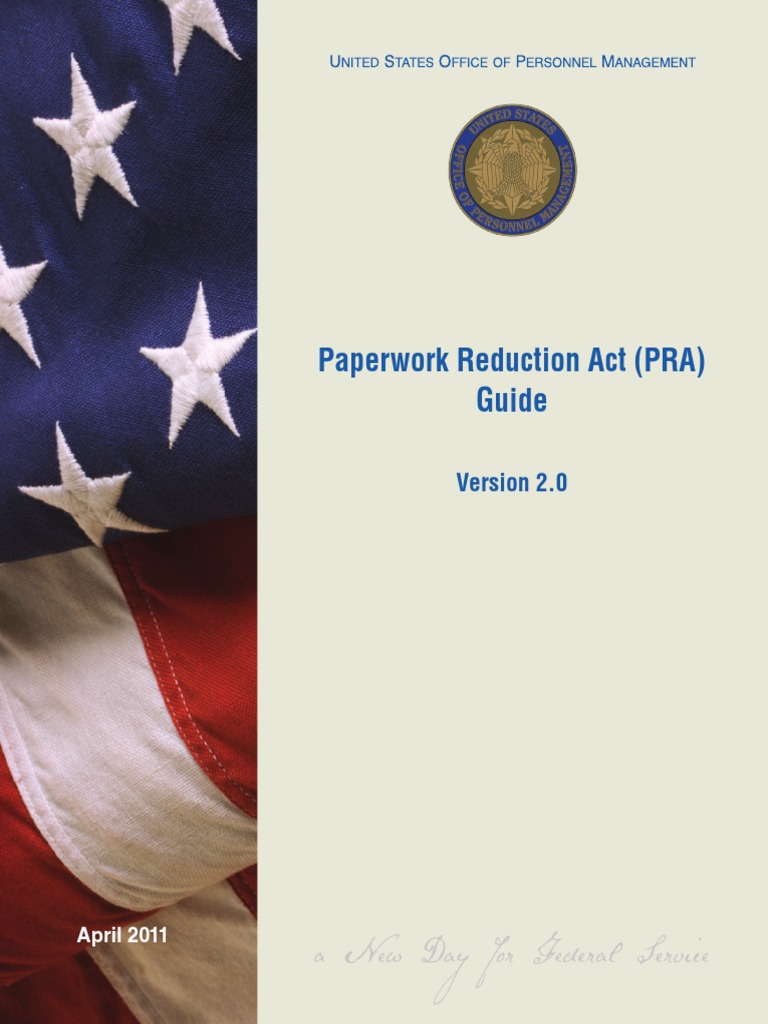Paperwork Reduction Act: Navigating Compliance Challenges

In today's digital world, where businesses and organizations handle an extensive amount of data and documentation, the Paperwork Reduction Act (PRA) of 1980 becomes increasingly relevant. This legislation was enacted to minimize the paperwork burden for both the public and private sectors while ensuring the efficient management of information collection by federal agencies. Navigating compliance with the PRA can be challenging but is essential for organizations interacting with federal entities.
Understanding the Paperwork Reduction Act (PRA)

The Paperwork Reduction Act was introduced with several key objectives:
- To minimize the paperwork burden for individuals, small businesses, and other entities dealing with federal agencies.
- To ensure the maximum practical utility of the information collected by federal agencies.
- To improve the quality, utility, and clarity of information for reporting to or by federal agencies.
- To ensure that information collected by federal agencies is coordinated with other agencies to reduce the burden.
Key Components of the PRA

Clearance Requirements

Before any information collection can occur, agencies must obtain Office of Management and Budget (OMB) approval:
- Agencies must submit a request to the OMB, outlining the purpose, utility, and necessity of the collection.
- The OMB reviews the request under the criteria established by the PRA.
- Approvals are not given without careful consideration of the information’s necessity and the burden it imposes.
Public Participation and Transparency

The Act encourages public involvement:
- Public notices are required for proposed collections of information to allow for comments.
- Agencies must consider these comments before the OMB makes a final decision.
Compliance and Enforcement

The Act provides mechanisms for enforcement:
- Federal agencies must certify compliance with the PRA when submitting information collection requests.
- Non-compliance can lead to delays in information collection or legal repercussions.
Compliance Challenges

Navigating compliance with the PRA involves several challenges:
- Understanding Complexity: The PRA’s framework can be intricate, with nuances in interpretation and application.
- Resource Allocation: Completing the necessary paperwork for OMB approval requires time and resources, which can be scarce in already stretched organizations.
- Legal Concerns: Agencies and organizations must ensure their information collection activities align with the Act’s legal requirements to avoid penalties.
- Public Comment Management: Handling and responding to public comments in a timely and appropriate manner can be resource-intensive.
Best Practices for Compliance

To ensure compliance with the PRA, organizations and agencies can adopt the following best practices:
Early Planning

Start the clearance process early, understanding that:
- OMB reviews can take several months, impacting project timelines.
- Thorough preparation and accurate documentation are crucial for a swift approval process.
Proactive Communication

Maintain regular communication with the OMB:
- Address queries and respond promptly to feedback or concerns.
- Establish ongoing relationships to streamline future compliance efforts.
Training and Awareness

Ensure staff understand the PRA:
- Conduct regular training sessions for staff involved in information collection activities.
- Encourage a culture of compliance and accountability.
Leverage Technology

Use technology to:
- Streamline the collection process.
- Ensure accurate tracking of information collection activities.
- Employ electronic means to gather public comments and manage the response process efficiently.
💡 Note: Leveraging technology can help in managing the compliance process more efficiently, reducing the risk of errors and enhancing traceability of documentation.
The Impact of PRA Compliance

Compliance with the PRA has significant benefits:
- Reduced Burden: Minimizes unnecessary paperwork for the public and businesses, reducing compliance costs.
- Improved Data Management: Encourages agencies to critically assess the necessity and utility of information collection, fostering better data management practices.
- Public Trust: Enhances public trust by ensuring transparency in government activities related to information collection.
- Legal and Financial Safeguards: Protects organizations from legal challenges and potential fines associated with non-compliance.
Engaging with the Public

The PRA’s public comment component is essential:
- Ensure notices are published in the Federal Register in a timely manner.
- Consider feedback and make necessary adjustments to information collection proposals.
- Communicate the changes or responses to comments back to the public.
📣 Note: Public comments can significantly shape the information collection process. Addressing concerns promptly enhances the credibility and effectiveness of the collection activity.
The journey to navigate compliance with the Paperwork Reduction Act involves a blend of understanding its principles, proactively preparing for clearance, leveraging technology, and effectively engaging with the public. The efforts made towards PRA compliance not only streamline bureaucratic processes but also promote transparency, reduce administrative burden, and improve the quality of information management. This, in turn, fosters a more efficient, responsive, and trusted relationship between federal agencies and the public they serve.
What is the purpose of the Paperwork Reduction Act?

+
The primary purpose of the PRA is to minimize the burden of federal paperwork on individuals, businesses, and other entities while ensuring that the collection of information by federal agencies is necessary, effective, and reduces duplication.
How does one apply for an OMB clearance?

+
Agencies must submit a formal request to the OMB, detailing the need for the information collection, the method, and the expected burden on respondents. Public comments must also be solicited and considered during this process.
What happens if a federal agency does not comply with the PRA?

+
Non-compliance can lead to OMB disapproval of information collection requests, delays in project implementation, legal consequences, and public criticism regarding transparency and efficiency.



